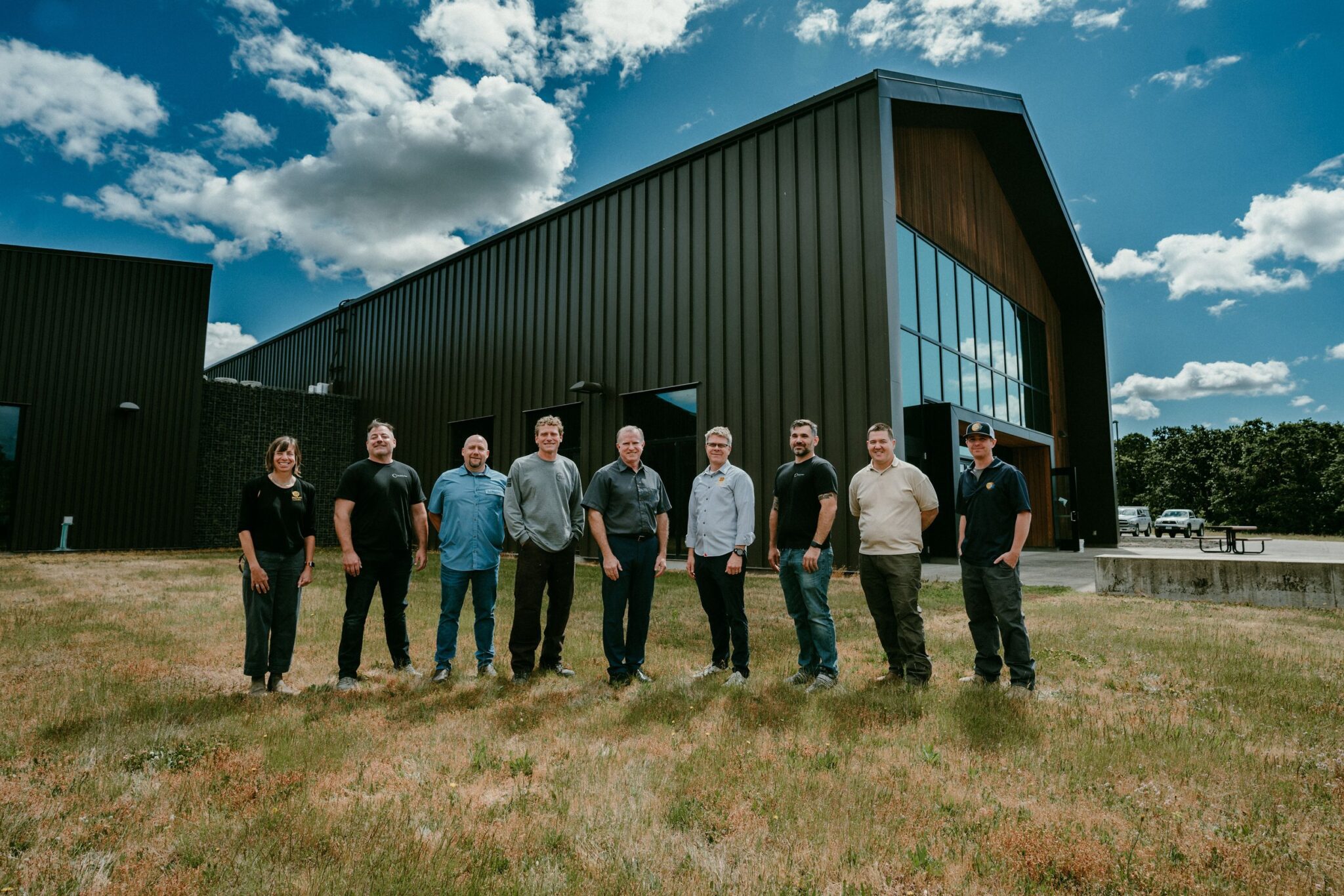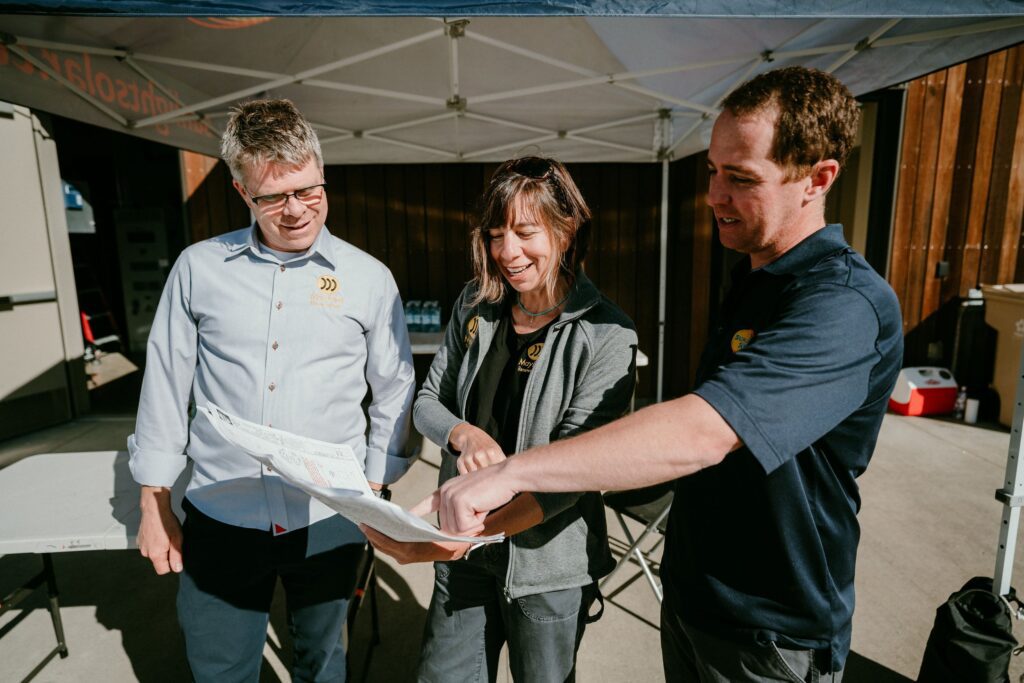
Technical Article
Why Designing a Resilient Solar-Plus-Storage System Requires a Resilient Team
Background: The Oregon Military Department Project
From idea to interconnection, the Oregon Military Department (OMD) Readiness Center resiliency project took nearly three years, requiring storage system vetting, deep code analysis, redesigns and persistence.
OMD wanted to bolster the resiliency of its Colonel James W. Nesmith Readiness Center, one of 39 Readiness Centers it operates throughout the state. The Nesmith Readiness Center already had a 255 kW interconnected solar photovoltaic (PV) array and a 150 kW diesel generator, but in the event of an earthquake or long-duration grid power outage, the PV system would be inoperable, leaving just the generator’s 1,000-gallon tank. OMD sought an energy storage system (ESS) to utilize the existing on-site solar assets during outages and boost its backup power capacity to 14 days, as well as provide a solar-plus-storage blueprint for installations at other facilities.
Phase 1: Solar-Plus-Storage Feasibility Study
Load Analysis
The Mayfield team performed an initial model, but a true interconnected PV-plus-storage feasibility study requires load monitoring devices installed at the site. Mayfield installed these on an emergency panel and a standby panel—the two electrical panels OMD wanted to keep online for extended outages. After gathering several months of on-site production and usage data, those values were put into the modeling program. Our team then ran simulations for three potential energy storage systems at three different times of the year—January, April and August—for a total of nine different models.
Product Assessment
For a commercial and industrial (C&I) storage project of this size, product availability is fairly limited. Site-specific details often dictate which equipment you will be using. At this stage, we had to ask a few key questions:
- Does the ESS limit the PV? This question made a big difference in this particular project. For example, one of the three systems would accept only 150 of the total 255 kW PV on site. That was a nonstarter to meet the project objectives.
- Where will it be installed? The client wanted the system to be installed indoors in the electrical room rather than outdoors, where it would take up parking space.
- What are its associated costs? Each of the three energy storage systems carried different equipment and associated balance of system costs. Those values were also detailed in the feasibility study.
- Which products are the safest? Safety is always a factor, but especially so with an indoor installation. Among lithium-based battery chemistries, nickel-manganese-cobalt (NMC) is fairly common but presents a risk of fire via thermal runaway versus lithium-iron phosphate batteries (LFP), which do not.
Phase 2: Interconnected Energy Storage System Design
Mayfield Renewables was in charge of producing CAD drawings, designing the plansets and ensuring code compliance and AHJ approval for this large solar-plus-storage system. Translating a feasibility study into an energy storage system (ESS) design that meets both code and the project’s objectives takes skill, experience and patience because issues will inevitably pop up in a commercial solar-plus-storage project this complex.
Knowing Code
The design originally called for the generator to be able to charge the battery bank while it was running. However, NEC Code requirements from Article 700 for interfacing with an emergency panel are more restrictive than those for standby panels. Thus, the final design ended up having to isolate the generator from the rest of the system while leaving the emergency side alone on the automatic transfer switch. Addressing this Code requirement translated into the need for a little more generator fuel, but still necessitated a near-total rewrite of the design.
In general, energy storage codes and standards are evolving and complex but entirely necessary for system safety and longevity.
Learn more about our private group workshops on electrical and fire codes for solar-plus-storage systems here.

Being Resilient
Altering designs is not ideal, but it is a reality for complicated projects like this. This particular rewrite took a few months to finalize. In the end, the full design process took about eight months, followed by three months for AHJ to sign off on the planset and another three months for utility approval. For as long as this project took, it could have stalled out completely if the team had not been persistent to push past hurdles or didn’t have the frame of reference and expertise.
Conclusion: The results
Finishing Touch
In addition to extending the facility’s outage capability to 14 days, the solar-plus-storage system is designed to use the battery every day to reduce peak loads and save OMD about $2,000 a year. Additionally, the success of the OMD project provided the client a working blueprint for future resiliency projects.
Keys to Success
- Knowing how to vet battery systems in the emerging “solar-plus-storage” category.
- Crafting a feasibility study that’s technically in-depth but also readable for various project stakeholders.
- Understanding how to directly translate a feasibility study into a safe, code-compliant energy storage system design.
- Possessing deep knowledge of ESS industry codes and standards and how to implement these effectively in order to pass inspection.
- Keeping projects moving despite inevitable setbacks.
Author Justine Sanchez is the solar-plus-storage director at Mayfield Renewables and an NEC Code-Making Panel member. To start a solar-plus-storage design project or inquire about project consulting, simply fill out this quick form.

